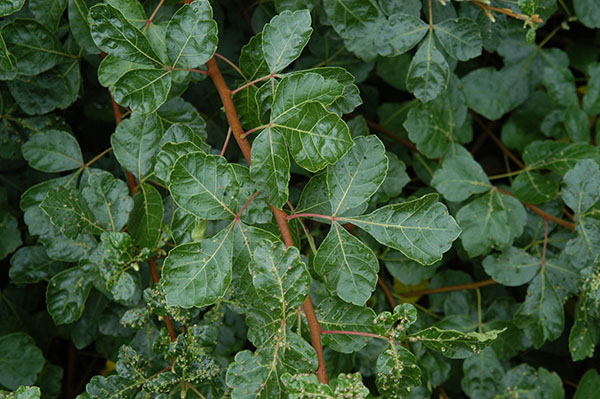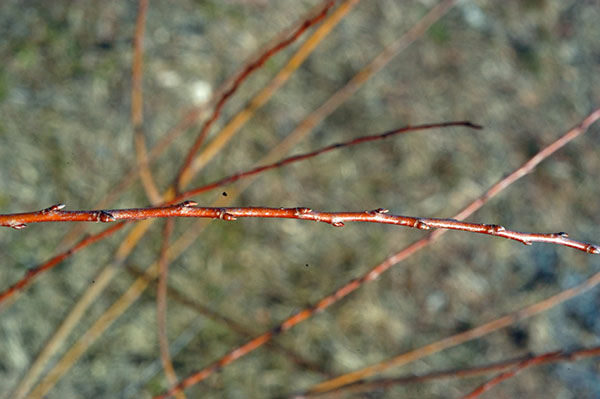Rhus typhina
Staghorn Sumac
Quebec to Ontario, south to Georgia, Indiana and Iowa
A large, loose, open, spreading shrub or a gaunt, scraggly tree with a flattish crown and branches resembling the horns on a male deer.
Waste areas, along railroad tracks and highways. Prefers moist, well drained soil but will tolerate many soil types.
Staghorn Sumac is native to the eastern United States and northwards into Canada. It's a loose, open, upright shrub or scraggly tree of 15-25 feet in height and comparable spread. The crown is generally flattened and the branches are picturesquely angular, resembling the antlers of a male deer. Staghorn Sumac is prone to suckering and can produce large colonies. Leaves are alternate, compoundly pinnate. Entire leaves are 1-2 feet long with 13 to 27 leaflets, each leaflet lance-oblong, 2-5 inches long. Leaves, petiole, and rachis are all pubsecent. Foliage is bright green in the summer, changing to a dramatic yellow, orange or red in the fall. Flowers are dioecious, yellowish green and emerge in June and July. Female flowers are borne in dense, hairy, 4-8 inch long panicles. Male flowers are borne in looser, wider panicles. Hairy, crimson, fruit emerges in late August and persists through the winter into April. Staghorn Sumac is useful for naturalizing and massing. Its a tough plant that will grow in waste areas and urban situations if the soil is well drained. It has a coarse appearance in the winter and thus proper siting is important.
Bright green in summer. Yellow, organge, and red fall color.
Buds are hairy. Leaf scarfs not elevated and somewhat C-shaped.
Younger stems have a dense, velvety, reddish brown pubescence that persists for 2-3 years. Older stems often lack pubescence, and are gray in color.
Dioecious, greenish yellow, June to early July; female borne in dense, hairy panicles, 4 to 8 inches long; male in a bigger, looser, wider panicle.
Crimson, late August through April, densely hairy druope, closely packed in a pyramidal panicle; bright crimson in early fall, becoming duller and darker red with cold weather and often still color even into spring.
Cuttings, root pieces collected in December placed in moist sand:peat should yield plants in 2 months
'Lanciniata' - Leaflets deeply divided created a fine-textured, ferny appearance.
'Dissecta' - Similar to 'Laciniata' but leaflets more deeply divided.
'Tiger Eyes'® ('Bailtiger') - Bronze-yellow new growth, settles to yellow, yellow-green in July-August, then orange-red in fall.






